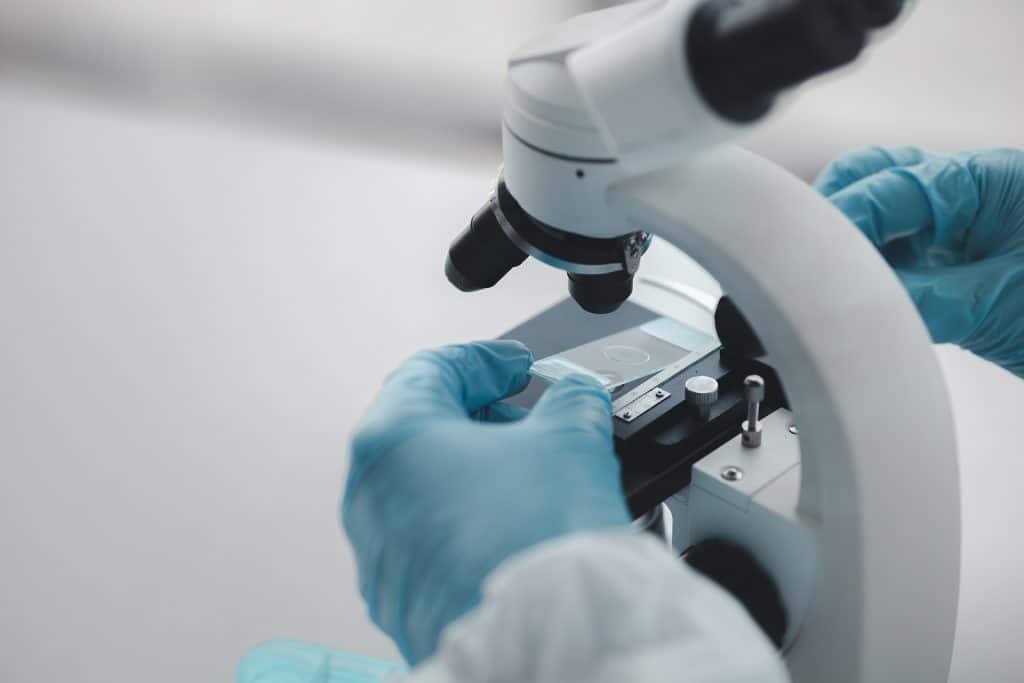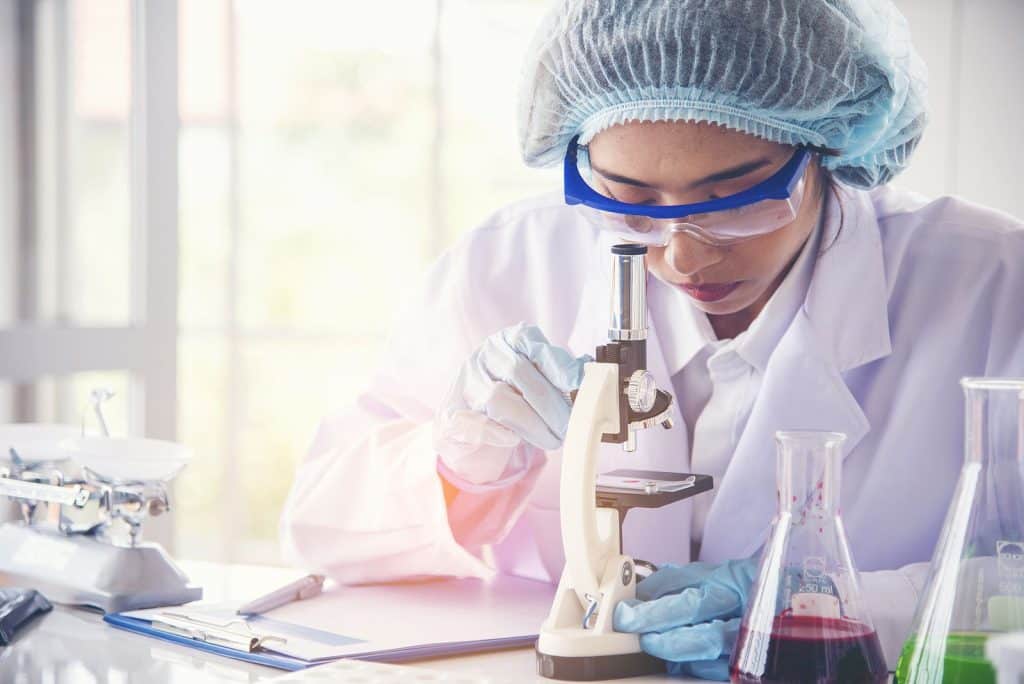Is meat grown in labs a real thing? The simple answer is yes: meat grown in labs is a real thing, and the industry is growing rapidly. Cultured meat, specifically cell-cultured beef, poultry, chicken, and seafood, has been in the development process for multiple companies worldwide for over a decade.
What is vital to know is that two California companies, Upside Foods and Good Meat, announced the receipt of first-ever approvals from the U.S. Department of Agriculture in June of 2023. The Food and Drug Administration had already given the companies their safety approval but only for their cell-cultivated chicken product, so we now have meat grown in labs served to you soon at a restaurant near you. Wow, how nice.
Table of Contents
Meat Grown In Labs Approved For U.S. Restaurants
Thanks to this recent approval from the USDA, cultured meat, as it is often labeled, Meat Grown In Labs, will soon be available in restaurants in two major U.S. cities, San Francisco and Washington, D.C. This was the final regulatory thumbs-up that the California-based companies needed to serve and sell their products in the U.S. So if you’ve been craving a chicken sandwich that is slaughter-free and cruelty-free, you now have options of meat grown in labs.
Picture a world where meat is no longer sourced from traditional farming methods. Instead, it is created in laboratories using cutting-edge technology. Also known as lab-grown or cell-based meat, this innovative industry has the potential to revolutionize the way we produce and consume animal protein. But not everyone is a fan, especially traditional farmers.

What is Cultured Meat or Meat Grown in Labs
At its core, cultured meat or meat grown in labs is a groundbreaking concept that involves growing animal cells in a laboratory setting to create real meat products. It’s like taking the essence of traditional agriculture and fusing it with scientific innovation. Instead of raising animals on farms and slaughtering them for their meat, scientists are now able to harvest a small sample of animal cells without causing harm to the animal itself.
These cells are then placed into a nutrient-rich environment where they multiply and develop into muscle tissue, just as they would in an animal’s body. The result is genuine, high-quality meat that looks, tastes, and cooks like conventional cuts of beef or poultry. The process may seem futuristic, but it can potentially address some significant issues facing our current food system.
Benefits of Cultured Meat or Meat Grown In Labs
The production of cultured meat offers numerous advantages over traditional farming methods. First and foremost, it significantly reduces the environmental impact of livestock farming. Animal agriculture is believed responsible for large amounts of deforestation, greenhouse gas emissions, and water pollution from runoff waste. All these consequences of traditional farming can be mitigated by embracing lab-grown alternatives.
Others who support cultivated meat also point out that from an ethical standpoint, cultured meat holds promise. Eliminating the need for raising animals solely for slaughter and reducing reliance on factory farming practices will likely alleviate unnecessary suffering for the animals involved. Proponents state this new technology will provide a more humane approach to obtaining protein-rich foods.
Moreover, there’s also great potential when it comes to ensuring food security worldwide. If cultured meats could be produced at scale in controlled environments at affordable prices, geographic limitations of availability of arable land would no longer exist. Meat grown in labs could provide affordable protein sources even in regions struggling with limited resources or prone to natural disasters.
Supporters of the industry also point out that producing meat grown in labs has a much lower carbon footprint and requires fewer resources than traditional farming. Moreover, this innovative approach could address ethical animal welfare concerns by eliminating the need for intensive factory farming practices.

How Is Meat Grown In Labs
Cultured meat, also known as lab-grown or cell-based meat, is a revolutionary innovation in food technology. Instead of raising and slaughtering animals for meat consumption, cultured meat is produced by culturing animal cells in a laboratory setting.
The process begins with collecting a small sample of animal cells, typically from muscle tissue. These cells are then placed in a nutrient-rich culture medium with the necessary nutrients to grow and multiply. Over time, the cells form muscle tissue that can be harvested and processed into various types of meat products.
To mimic the texture and flavor of traditional meat, scientists use techniques such as scaffolding or 3D bioprinting to create structures similar to natural muscle fibers. This process helps recreate the authentic taste and mouthfeel associated with conventional meats.
Possible Downsides To Meat Grown In Labs
Cultured meat, also known as lab grown or cultivated meat, is a revolutionary concept in food production. Meat grown in labs offers several potential benefits that have garnered significant attention and excitement among scientists, environmentalists, and consumers alike. However, like any new technology, it also comes with its own set of challenges and concerns.
Some challenges and concerns surrounding cultured meat production need further exploration as the industry is so new. One primary concern is the cost of scaling up production to make it commercially viable for mass consumption. Currently, producing lab grown meat is a very expensive process compared to traditional methods due to high research and development costs.
Furthermore, the long-term effects on human health are still unknown since this technology has yet to be extensively tested on humans. It may take years or even decades of regular consumption to discover any health dangers.
As more products are produced for approval, many experts expect the nutritional composition may differ from conventionally farmed meats. This fact means that unexpected risks to consumers’ health will have to be carefully managed.
Before the general public embraces a new era of meat grown in labs, more thorough research needs to be completed. Experts also agree that evidence-based regulation and public awareness must be prioritized to ensure that the potential benefits of cultured meat outweigh any negative impacts.

Is Cultured Meat Healthy?
One of the most pressing questions surrounding lab-grown meat is its potential impact on our health. After all, if we are going to replace traditional animal farming with a new method of producing meat, it’s crucial to ensure that the result is safe for consumption.
First and foremost, it’s important to note that lab-grown meat has been extensively studied and tested for safety. Scientists meticulously monitor the entire production process to minimize any risks or contamination. This level of control significantly reduces the chances of foodborne illnesses commonly associated with traditional livestock farming.
Additionally, because lab-grown meat is produced in sterile environments without exposure to antibiotics or hormones, it eliminates many concerns related to drug residues in animal products. Food experts point out that this could mean consumers can enjoy a potentially healthier option regarding their protein choices.
Moreover, since cultured meat does not involve slaughtering animals or contribute to pollution caused by large-scale agriculture practices, it offers an environmentally friendly alternative. By reducing greenhouse gas emissions and land use requirements, lab-grown meat may also have indirect health benefits by mitigating climate change and preserving natural resources.
However, despite these potential advantages, there are still ongoing debates within the scientific community regarding the long-term effects of consuming lab-grown meat. While initial studies have shown promising results regarding nutritional composition and taste profiles similar to conventional meats, no research evenly compares traditional meat’s nutrition to meat grown in labs.
While there are still challenges to overcome before cultured meats become widely available on supermarket shelves – such as scaling up production processes and reducing costs – ongoing research efforts hold promise for a future where sustainable alternatives to traditional agriculture exist. So get used to new lab-grown meat coming to a supermarket near you.
Read more – Best Ways to Start Keto








